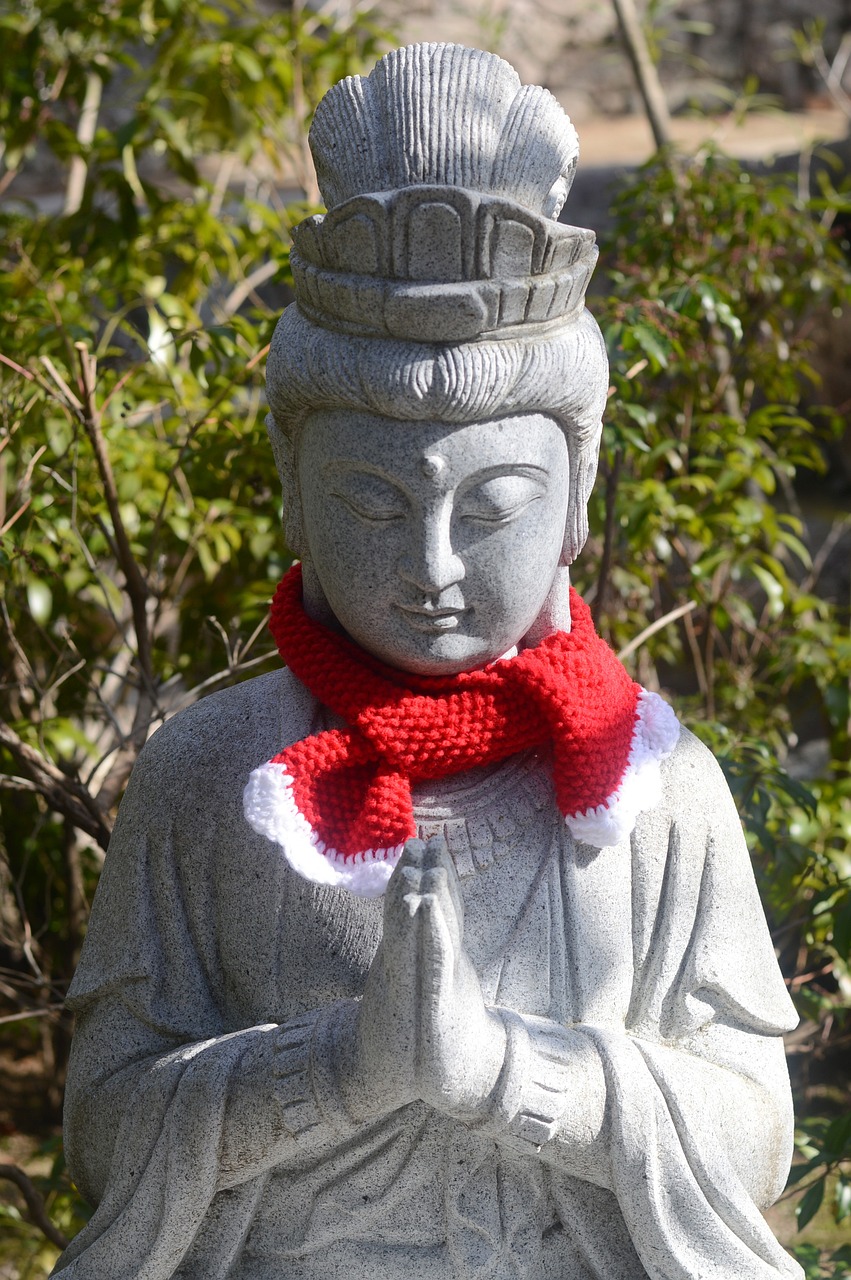Overview
In the realm of Chinese mythology, Guanyin (觀音) stands as the revered goddess of mercy, embodying compassion itself. Known for her omnipresence and omniscience, worshippers seek her divine intervention in moments of doubt, distress, and fear. A Ming Dynasty poet from the 14th century eloquently captured her essence in verse:
Like a speck of dust, ephemeral is the body,
So is the doctrine ephemeral, like a speck of dust.
Only when all sentient beings and the world attain emptiness
Will [Guanyin]’s all-compassionate heart rest.
Guanyin traces her origins to the Hindu deity Avalokiteśvara. The myth of Avalokiteśvara spread across China with the introduction of Buddhism, intertwining with local legends, a process known as syncretism, resulting in the contemporary interpretation of Guanyin. Though depicted in both male and female forms, she is predominantly represented as female in Chinese traditions.
Etymology
The name Guanyin derives from the original Sanskrit “Avalokiteśvara,” meaning “he who hears the cries of the suffering.” This was translated into Guānshìyīn (觀世音), meaning “the one who hears the sounds of the world,” which later condensed to Guānyīn (觀音). Her name symbolizes her profound ability to perceive the cries of those in anguish and her boundless compassion. In Wade-Giles, her name appears as Kuanyin.
Attributes
Typically, Guanyin is depicted in a flowing white robe adorned with jade necklaces, which symbolize purity in Chinese culture. She is often portrayed holding a vase of water in one hand and a willow branch in the other. Her common representations include standing on a dragon’s back, sitting atop a lotus flower, or ascending through clouds.
Family
In her many incarnations, Guanyin is said to be the daughter of King Zhuang of Chu and Lady Fan. To aid her in her endeavors, she is accompanied by two devoted attendants: Longnü, a granddaughter of the Dragon King, and Shancai, one of her adept disciples.
Mythology
Throughout numerous Chinese myths, Guanyin is consistently illustrated as a potent and benevolent figure, shaped by an unparalleled sense of compassion.
Origins: The Legend of Miao Shan
Prior to her ascension as the goddess of compassion, Guanyin was a girl named Miao Shan (妙善), born to King Zhuang of Chu and his wife, Lady Yin. Miao Shan exhibited a remarkable difference: from an early age, she chanted Buddhist texts.
When the king sought to arrange a marriage for her, she expressed her wish to become a Buddhist nun, stating she would only consent to a marriage if it could alleviate the sufferings of aging, illness, and death. Ultimately, her father permitted her to enter the monastery but instructed the monks to burden her with the toughest tasks, hoping to dissuade her. Surprisingly, local forest creatures assisted her, much to her father’s rage. In a fit of anger, he burned down the temple, but Miao Shan extinguished the flames with her bare hands. Alarmed by her apparent supernatural abilities, her father condemned her to death.
On the day of her execution, as the axe approached, it shattered. The same fate befell the executioner’s sword and arrows. Realizing the chaos her presence caused, Miao Shan forgave the executioner, choosing to absorb the karmic repercussions of his actions instead. Upon her arrival in Hell, she wept upon witnessing the suffering souls. Her immense compassion released a wellspring of karmic energy, liberating countless souls. Eventually, Yan Wang (閻王), the ruler of the underworld, allowed her to return to Earth as the enlightened Guanyin.
Guanyin and Shancai
In India, a young boy named Shancai dreamed of meeting Guanyin, the enigmatic Buddhist master working from a distant island. Despite his leg disability, he fervently traveled to her domain, pleading to be accepted as her disciple. To test his resolve, Guanyin presented him with a vision of three pirates pushing her off a cliff. Without hesitation, Shancai leapt into the void to save her, and Guanyin caught him mid-fall, miraculously restoring his ability to walk. From that day forward, Shancai became her loyal follower.
Guanyin and Longnü
On another occasion, the third son of the Dragon King found himself ensnared in a fisherman’s net and was powerless to transform back to his true form. Desperate cries reached Guanyin, who instructed Shancai to rescue him. Shancai arrived at a bustling auction where the magical fish was being sold. Despite the bidding frenzy, Guanyin’s voice resonated through the crowd, reminding them that life should belong to the one who saves it, rather than to someone intent on exploitation. The crowd dispersed, allowing Shancai to liberate the fish, who then transformed back into the dragon and returned to his father, the Dragon King. In gratitude, Longnü was sent to thank Guanyin and Shancai, offering them the Pearl of Light, a stunning gem. Overcome with admiration, Longnü wished to be Guanyin’s disciple, which was accepted under the condition that she would care for the pearl.
Journey to the West
Guanyin plays a pivotal role in “Journey to the West,” assisting the monk Tang Sanzang in subduing the notorious Monkey King, Sun Wukong, by providing him with a restraining ring. Her interventions occur frequently throughout Tang’s travels, especially when confronting formidable demons, often taking action herself.
Pop Culture
Guanyin remains a profoundly influential figure in Chinese culture, often likened to the Virgin Mary in Christianity. She is believed to offer solace to those in grief, with particular compassion for women and children, and is believed to grant fertility to those unable to conceive.
She has inspired various narratives in films and literature, notably in the 2011 Thai film, “Top Secret: Wai Roon Pan Lan,” and features in Richard Park’s science fiction series. In the Kōdai-ji temple in Kyoto, Japan, she has even been recreated as an android who conducts daily prayers.



